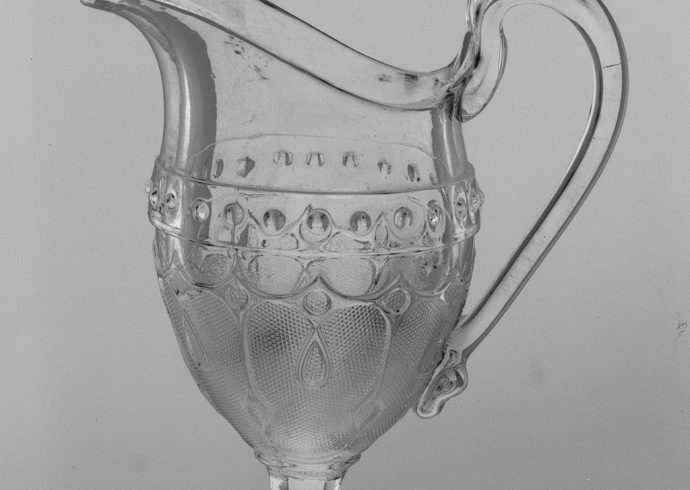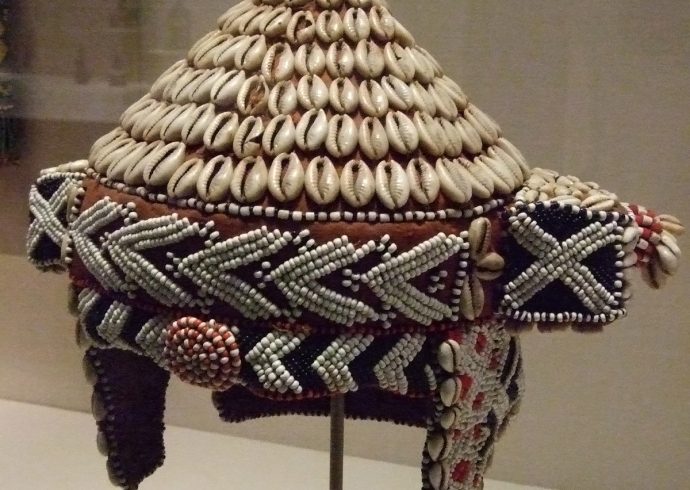
Boston and Sandwich glass paperweights
The Boston and Sandwich Glass Company of Sandwich, Massachusetts was known for creating distinct floral glass paperweights in addition to their molded glass and pressed glass which became popular in households of means during the nineteenth century. As with the many other glass companies during that period, paperweights were created using the blown glass techniques, combining cut glass floral rods, or millefiori, and lampwork glass shapes, often in the form of large flowers.
Boston and Sandwich Glass was founded by glassmaker Deming Jarves in 1825, whose background was with the New England Glass Company, or NEGC. Located in East Cambridge, Massachusetts, the New England Glass Company also created many paperweights, designs which inspired Jarves to produce under his own company name. During the early years of Boston and Sandwich Glass, glassmakers previously employed with New England Glass Company, Ireland and England went to work for Jarves.
Born in 1790, Jarves was a Boston native who had a keen eye for the creation of glass. What enabled him to start his own glass company at the age of 35 was a $25,000 inheritance which he was allowed to use at his own discretion. An astute businessman who learned the ins and outs of glassmaking, he set the standard for glassmaking in the United States. For example, he used the latest technology for glassmaking and was always discovering new methods to make glass, including temperatures at which to create melted glass. Unlike the owners of previous glass factories, who kept their glassmaking secrets well-guarded, Jarves kept a book with hand-written recipes for every glass making method he used. He even evaluated the quality of sand used in the glass made for Boston and Sandwich Glass, and despite the fact the company’s location was on Cape Cod, so close to beaches where there was an abundance of sand, Jarves soon discovered a higher quality sand in the Berkshires of western Massachusetts.
Perhaps one of the most popular paperweight designs was a glass red poinsettia, positioned in the center of a clear round paperweight. Sometimes the design might include a white lattice background. Blue poinsettia paperweights were also made. Other designs were also used: dahlia, pears, even apples. Scramble paperweights in the style of the New England Glass Company were also made. A scramble paperweight consists of colorful cut glass canes all scrambled together, often resembling candy pieces.
One of the better-known employees of Boston and Sandwich Glass was Nicholas Lutz, a Frenchman who was responsible for designing and making many of the paperweights for the company. Lutz gained his glassmaking experience through Cristalleries de St. Louis in France. It is worth noting that paperweights made by Boston and Sandwich Glass were often done after work hours, no doubt as a means of using up odds and ends of glass pieces, which resulted in beautiful works of art. Since these paperweights were not a commercial product of the factory, they were often given as gifts to friends and family. Another famous person to work for Boston and Sandwich Glass was Mary Gregory, a glass decorator born in Providence, Rhode Island in 1856. She worked primarily in painting glass, inspired by the Kate Greenway illustrations in children’s books during the second half of the nineteenth century.
Boston and Sandwich Glass closed in 1888 due to ongoing financial issues as the result of concentrating on decorative glass along with heavy competition from glass manufacturers in Pennsylvania, Virginia, West Virginia, and Ohio producing more affordable glass from soda-ash, along with a unionized workers’ strike.
Today, most Boston and Sandwich Glass paperweights are in private collections or museums. A museum dedicated to Boston and Sandwich glass is located in Sandwich, Massachusetts.


